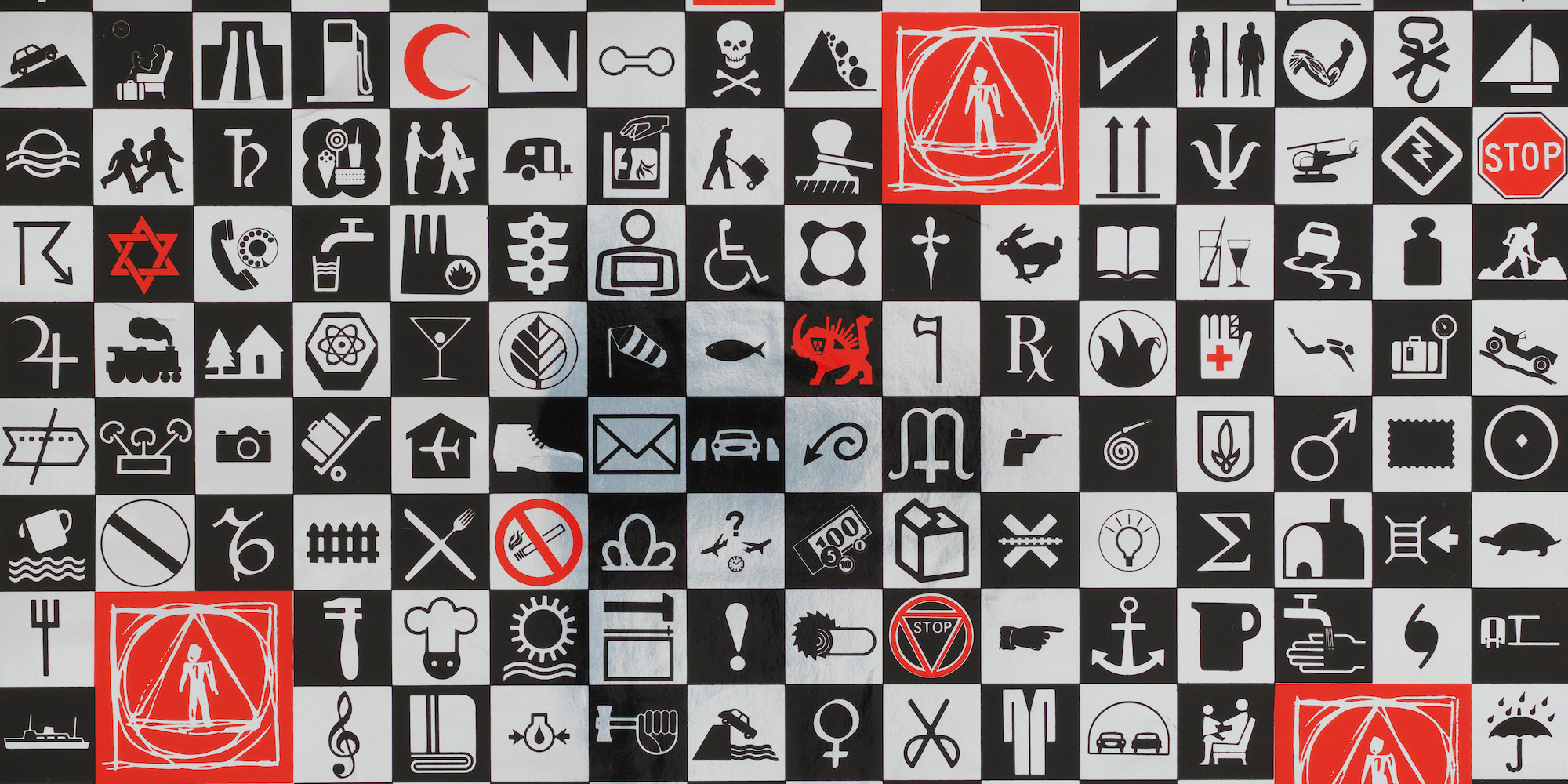From the stop sign to the laugh-cry emoji, symbols play a critical and ubiquitous role in everyday life. A forthcoming exhibition at Cooper Hewitt, Smithsonian Design Museum, “Give Me a Sign: The Language of Symbols,” will examine the fascinating histories behind many of the symbols that instruct, protect, entertain, empower and connect people. Presented in the Design Process Galleries on the museum’s first floor, the exhibition will be on view May 13, 2023, through Aug. 11, 2024.
“As communication tools designed to break language barriers, symbols serve a variety of human needs both in daily life and in extraordinary circumstances,” said Emily M. Orr, associate curator and acting head of Product Design and Decorative Arts at Cooper Hewitt. “A highlight of the exhibition will be the previously untold story of the making and impact of Henry Dreyfuss’ Symbol Sourcebook: An Authoritative Guide to International Graphic Symbols. This discipline-defining manual has elevated the importance of symbols and inspired their production and use around the world since its publication in 1972.”
Marking the 50th anniversary of the Symbol Sourcebook, this exhibition will draw from the archive of the book’s author and designer, Henry Dreyfuss, uniquely housed at Cooper Hewitt. As one of the United States’ leading industrial designers, Dreyfuss (1904–1972) promoted the power of symbols to facilitate quick and efficient global communication. His namesake industrial design firm developed and applied symbols on everything from cameras and packaging to tractors and telephones in order to improve the usability of objects and services. Through never-before-seen archival material, visitors will discover how Dreyfuss and his colleagues crowd-sourced, organized and compiled symbol designs across disciplines and industries to produce the Symbol Sourcebook that is still in use today.
The exhibition will chart the history behind symbols, such as the raised, clenched fist and its use in movements including the Black Lives Matter movement and more, the evolution of Olympic symbols to represent new sports and reach an international audience and the progression of the Accessible Icon from its creation in 1968 to the grassroots effort to update its appearance and reach from 2009 to 2011.
Another section of the exhibition will highlight how people use emoji to communicate who they are and what they believe in. The process for designing and submitting emoji to the Unicode Consortium—the global regulator that maintains standards across digital devices—will be told through the story of the “person with headscarf” and “inter-skintone couple” emoji, which are held in Cooper Hewitt’s permanent collection.
In the collaborative spirit of the Symbol Sourcebook, which Dreyfuss intended to expand with the creation of new symbols, visitors will be invited to design symbols and participate in creative activities in-gallery and online to co-create a Symbol Sourcebook of 2024.
ACKNOWLEDGMENTS
The exhibition was curated by Emily M. Orr, associate curator and acting head of Product Design and Decorative Arts at Cooper Hewitt, with Adriana Burkins, STEAM program manager, Bronx Children’s Museum, and with support from Cooper Hewitt curatorial fellows Arpie Gennetian and Uttara Nanavati, and former Interaction Lab director, Rachel Ginsberg.
Exhibition design and graphic design by Studio Matthews.
SUPPORT
“Give Me a Sign: The Language of Symbols” is made possible with generous support from the Marks Family Foundation Endowment Fund.
ABOUT COOPER HEWITT, SMITHSONIAN DESIGN MUSEUM
Cooper Hewitt is America’s design museum. Inclusive, innovative and experimental, the museum’s dynamic exhibitions, education programs, master’s program, publications and online resources inspire, educate and empower people through design. An integral part of the Smithsonian Institution—the world’s largest museum, education and research complex—Cooper Hewitt is located on New York City’s Museum Mile in the historic, landmark Carnegie Mansion. Steward of one of the world’s most diverse and comprehensive design collections—over 215,000 objects that range from an ancient Egyptian faience cup dating to about 1100 BC to contemporary 3D-printed objects and digital code—Cooper Hewitt welcomes everyone to discover the importance of design and its power to change the world.
For more information, visit www.cooperhewitt.org or follow @cooperhewitt on Instagram, Facebook, Twitter and YouTube.
